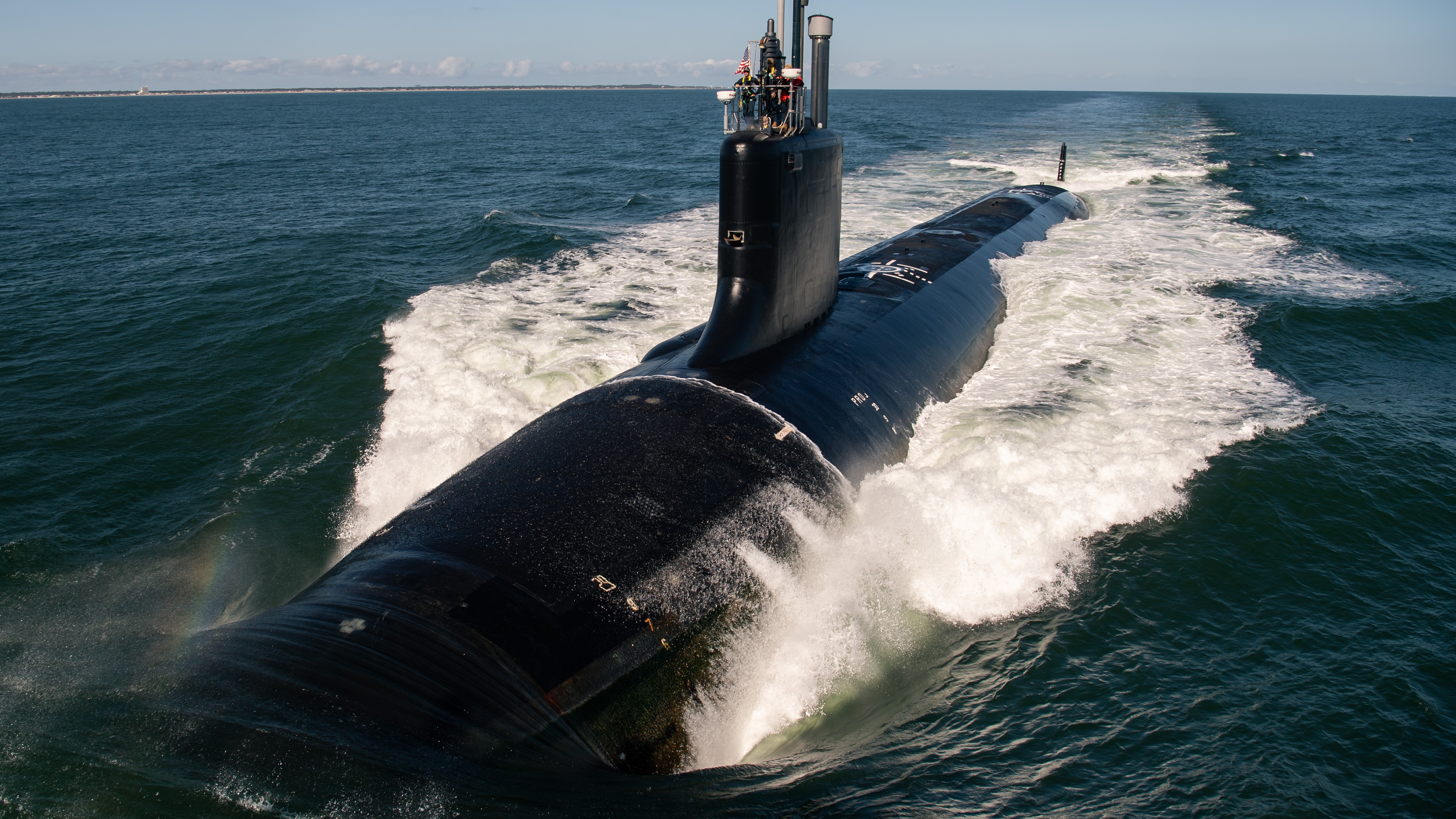Panel Addresses “The Future of Autonomous Undersea Warfare”
Vice Adm. Robert M. Gaucher, commander of Naval Submarine Forces, Submarine Force Atlantic and Allied Submarine Command, discussed the benefits of launching unmanned underwater vehicles (UUVs) from submarines on March 28, saying their ability to perform “dull, dirty and dangerous” tasks frees up submarines for other critical missions.
“About a decade ago, we came up with the term ‘dull, dirty and dangerous,’” Gaucher said. “I can send the vehicle off to go do that. … The possibilities to how these unmanned vehicles can help us is really endless.”
Hosted by the Hudson Institute, “The Future of Autonomous Undersea Warfare” panel also included Duane Fotheringham, president of the Uncrewed Systems group at HII Mission Technologies, and Matt Britton, director of the electronic systems portfolio in Mission Technologies’ Warfare Systems group. The discussion focused on how crewed and uncrewed teaming and advanced electronic warfare are redefining undersea dominance.
“One of the great strengths of robotic and autonomous systems,” Fotheringham said, “is their ability to go off and do those dull, dirty, dangerous missions. They can work in contested environments. They can be brought into an area covertly with a submarine and expand the reach of the submarine—one or more vehicles going out and being an off-board sensor network for the submarines.”
Britton discussed the integration of sensors and communication systems in unmanned systems, emphasizing the importance of open standards.
“If you look into the future,” he said, “what we’re doing is that really tactical edge, multi-function RF with security built-in. … We can integrate AI. We can integrate that sensor processing at the edge on something that’s disposable long-term. And those are the types of electronics that we’re building to field right now.”
Gaucher, who served on fast attack and ballistic missile submarines, including the HII-built USS Oklahoma City (SSN 723), also highlighted the cost benefit of using UUVs.
“So a submarine costs upwards of $3 billion,” he said. “A single medium-sized torpedo tube-launched unmanned underwater vehicle is on the order of $3 to $5 million, depending on how much capability you put into it. So I can now, for that price, multiply the capability of that $3 billion submarine without taking risk to the crew, without taking risk to the vehicle—to the to the capability in the submarine itself—for a much lower cost.”
An audio recording of the panel discussion is available at hudson.org.





